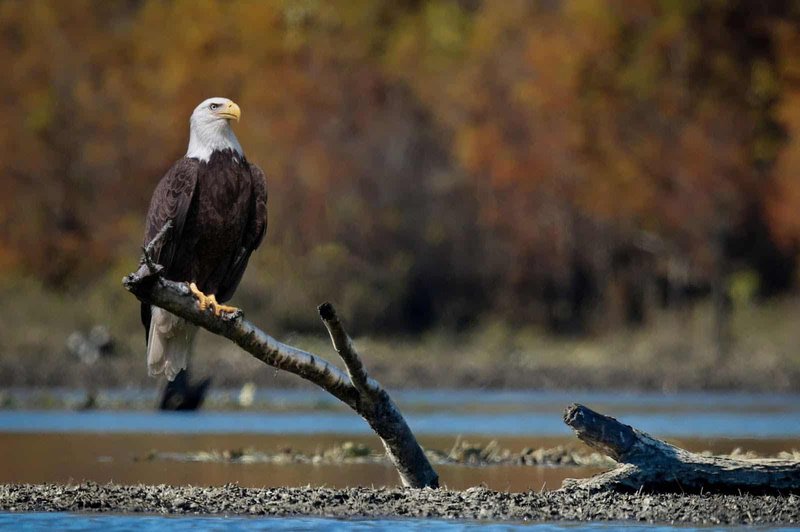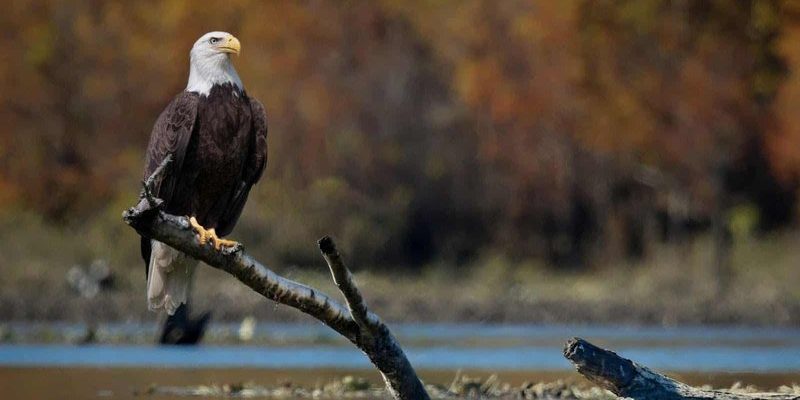
When we talk about conservation, imagine it as a big umbrella sheltering various strategies and initiatives aimed at preserving wildlife. Think of it like tending to a beautiful garden; we need to nurture it, protect it from pests, and make sure it gets enough sunlight and water. The same goes for eagles. Through dedicated programs, research, and community involvement, conservationists work to keep these birds thriving in their natural habitats.
Understanding the Importance of Eagles
Eagles aren’t just pretty faces; they play a crucial role in the environment. As top predators, they help maintain the balance of ecosystems. By keeping populations of smaller animals in check, they ensure that no one species dominates and creates chaos. Without eagles, these ecosystems might become unbalanced, leading to overpopulation of certain species, which can cause damaging effects on vegetation and other wildlife.
Moreover, eagles can be indicators of environmental health. Since they are at the top of the food chain, their well-being reflects the state of their environment. If we notice a decline in eagle populations, it can signal that something’s amiss in their habitat. Think of them as nature’s alarm system—when they’re in trouble, it’s time for us to take action.
In many cultures, eagles hold significant symbolic value, representing ideals like courage, freedom, and strength. For Native American tribes, they are often regarded as sacred animals, embodying a connection to the divine. Protecting eagles is not just about saving a species; it’s about preserving cultural heritage and values that resonate with many people.
Major Threats to Eagle Populations
Despite their strength, eagles face a number of serious threats today. One prominent issue is habitat loss. As urban areas expand and agriculture takes over wild spaces, eagles lose their nesting and hunting grounds. This shrinkage can lead to fewer breeding pairs, ultimately impacting the overall population.
There’s also the insidious threat of pollution. Chemicals like pesticides can accumulate in the food chain, affecting not only the prey that eagles consume but also the eagles themselves. One stark example is DDT, a pesticide that was banned in many countries but had devastating effects on bird populations in the past. It made eagle eggs brittle, leading to lower hatching success rates. Though we’ve made progress, pollution remains a critical concern.
Then there’s climate change, which has far-reaching effects on ecosystems. Changes in temperature and weather patterns can disrupt food availability and breeding times. For instance, earlier springs may lead to mismatches between the timing of young eagles’ hatching and the availability of food sources. The more we understand these threats, the better equipped we are to address them.
Conservation Organizations Leading the Charge
Many organizations have stepped up to protect eagles and their habitats. One of the most notable is the National Audubon Society, which focuses on conserving birds and their environments through advocacy, education, and habitat restoration efforts. They work tirelessly to create protected areas where eagles can thrive without the pressures of human development.
Another key player is the U.S. Fish and Wildlife Service, which has implemented various recovery plans for threatened and endangered eagle species. Their efforts include monitoring populations, protecting nesting sites, and enforcing regulations against hunting and trafficking. You might be surprised at how much impact these organizations can have when they collaborate with local communities and governments.
Additionally, smaller grassroots organizations often play a significant role. They may organize local initiatives like habitat clean-ups, educational workshops, or even monitoring eagle nests. By engaging communities, these organizations foster a sense of responsibility toward local wildlife, turning ordinary citizens into advocates for eagle conservation.
Government Policies Supporting Eagle Conservation
Government policies play a significant role in eagle conservation. The Bald and Golden Eagle Protection Act is one of the key pieces of legislation aimed at safeguarding these species. This act prohibits the killing, selling, or possessing of eagles without a permit, a critical step in ensuring their survival. It highlights the government’s recognition of eagles as a valuable part of our natural heritage.
Additionally, various Endangered Species Acts have been put into place to protect specific eagle populations that are at risk. These laws often lead to habitat restoration projects, funding for research, and public education campaigns to raise awareness about the importance of these birds. If you ever see a conservation program being promoted, chances are it’s tied back to these policies.
It’s also worth noting how collaboration between government agencies and conservation organizations can amplify these efforts. When policies are paired with on-the-ground action, they create a powerful force for change. Think of it as a tag-team approach—by combining resources and expertise, they can tackle larger issues more effectively.
Community Involvement and Education
Community involvement is a cornerstone of successful eagle conservation. When local residents take an interest in protecting eagles, it creates a ripple effect that benefits entire ecosystems. Community programs often focus on educating people about the importance of eagles and the threats they face. Engaging storytelling and hands-on activities can turn complex topics into relatable issues that resonate with everyday life.
For instance, school programs might include field trips to local nature reserves where students can observe eagles in their natural habitats. This firsthand experience can spark a passion for wildlife conservation that lasts a lifetime. Observing these powerful birds in action can be a truly transformative experience, fostering a deeper connection to nature.
Volunteer opportunities are also a fantastic way for community members to get involved. From organizing events to cleaning up natural habitats, every small action contributes to the bigger picture of eagle conservation. Plus, working alongside like-minded individuals can create a sense of community and shared purpose.
Success Stories in Eagle Conservation
There’s real hope in the world of eagle conservation, with numerous success stories highlighting the impact of dedicated efforts. One shining example is the recovery of the Bald Eagle in the United States. Once listed as endangered due to hunting and habitat destruction, conservation initiatives—such as banning DDT and protecting nesting areas—have led to a remarkable rebound in their populations. Today, Bald Eagles are a common sight in many regions, soaring across the skies once again.
Another inspiring story involves the California Condor, often considered one of the most endangered birds in North America. Through a combination of captive breeding programs and habitat restoration, the population has slowly begun to recover from just a few individuals in the 1980s to over 400 birds today. This illustrates the power of dedicated conservation efforts and the importance of ongoing support.
These success stories remind us that while challenges remain, progress is possible. Each success not only protects eagles but also reinforces the notion that our collective actions can lead to meaningful change.
Eagles are more than just beautiful birds; they are vital components of our ecosystems and symbols of our natural heritage. Protecting them takes a collective effort from everyone—government agencies, conservation organizations, and communities coming together. The threats they face, from habitat loss to pollution and climate change, highlight the importance of ongoing conservation efforts.
As we enjoy the beauty of these magnificent creatures in the sky, let’s take a moment to appreciate the work being done to safeguard their future. By supporting local conservation efforts, spreading awareness, and participating in community initiatives, we can all play a part in ensuring that eagles continue to thrive for generations to come. Remember, every small action counts—like a single eagle soaring high, we can all make a difference in the world of wildlife conservation.

